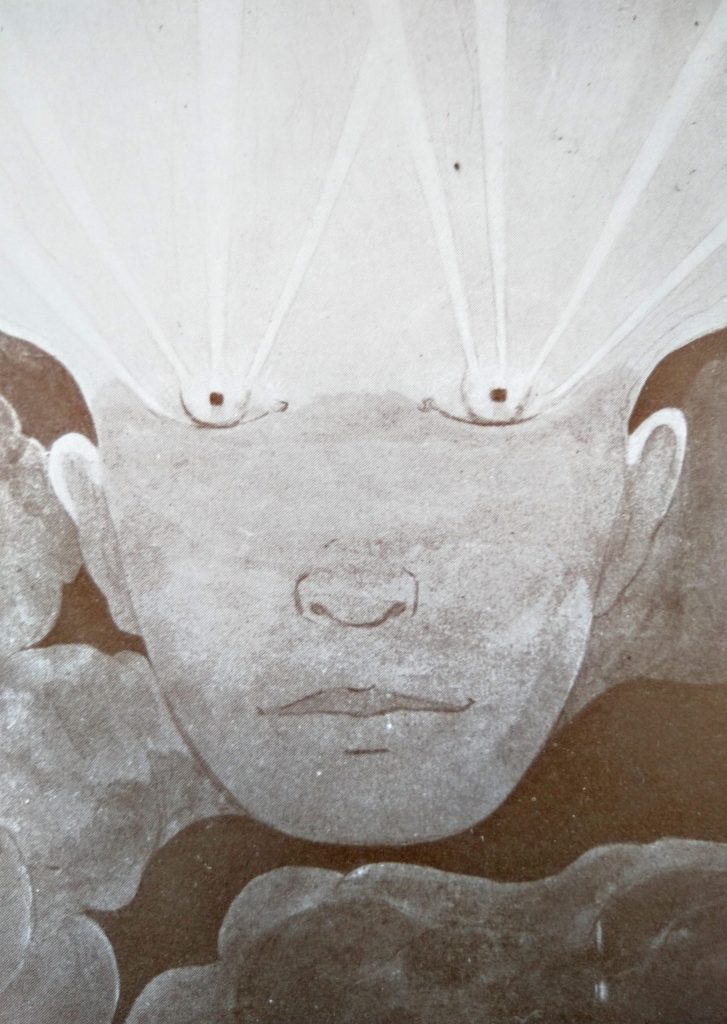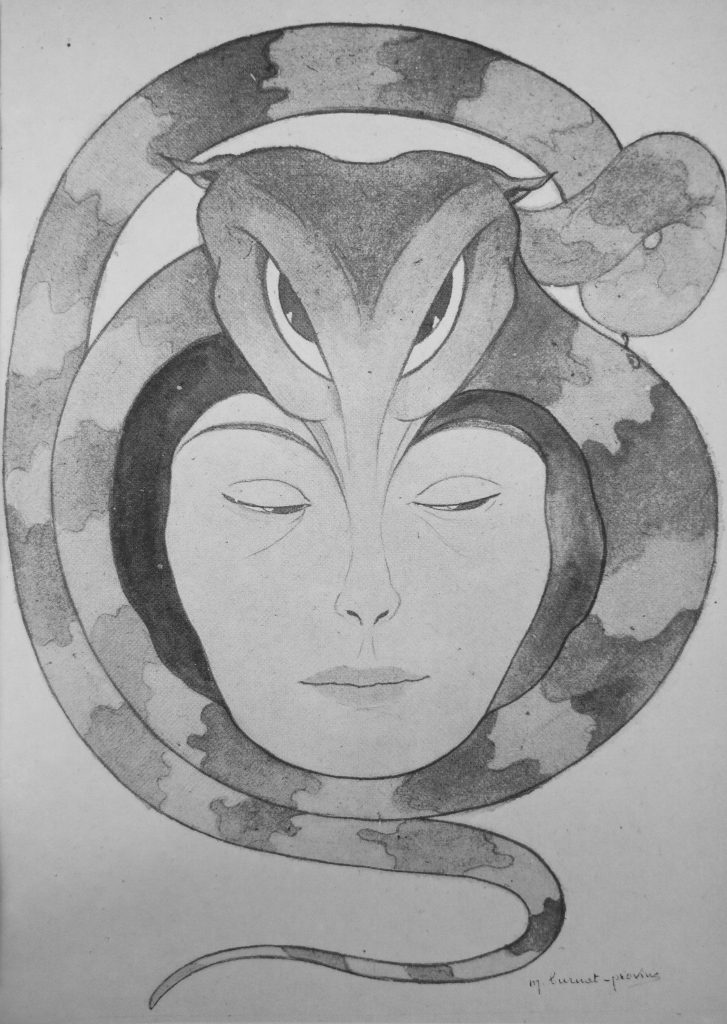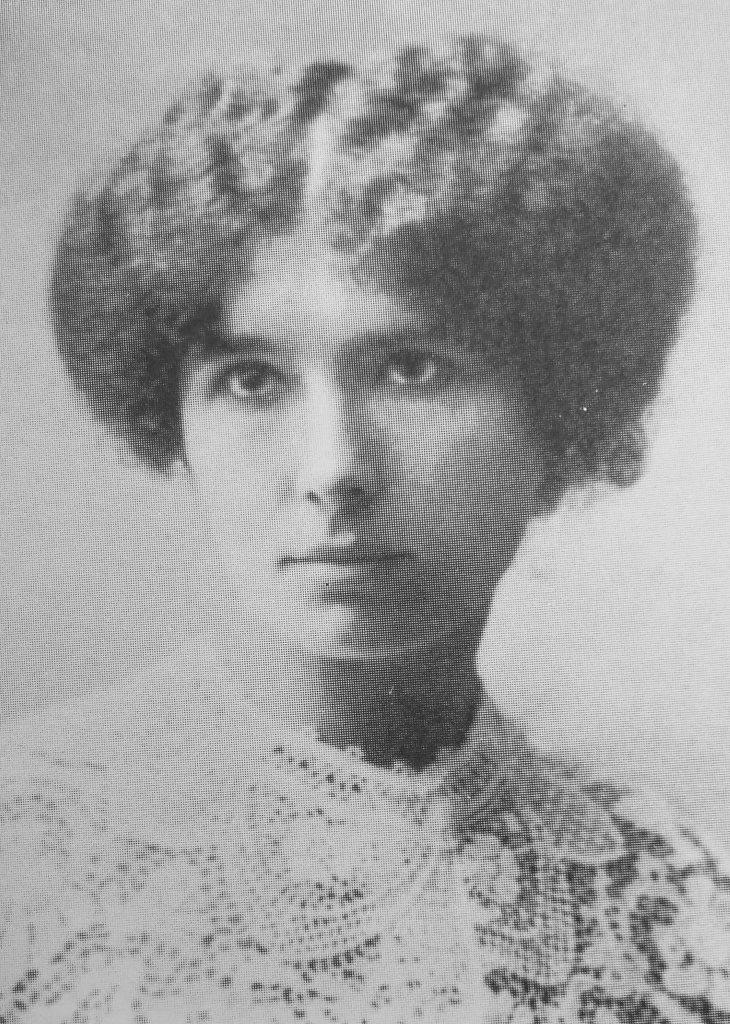Marguerite Burnat-Provins was born on June 26th, 1872 in Arras, France. Her father, a lawyer, was Belgian and her mother was of Dutch descent. It was an intellectual family and Marguerite benefited from a good education. She studied art and in 1902 married a Swiss architect called Adolphe Burnat-Provins. Marguerite continued to further her education and gained the reputation as an accomplished author and painter. However, whilst her professional life flourished, her marriage floundered, and after Marguerite’s affair with a young engineer called Paul de Kalbermatten, they divorced.
Due to Paul’s work commitments Marguerite led a peripatetic lifestyle, living in France, Egypt, Switzerland and London, until the First World War separated them and brought great upheaval to her life. In 1914 she experienced, in a heightened emotional state, the irresistible desire to write. Daily, for two and a half months, Marguerite would fill any scrap of paper she could find. One day she heard a voice say the name, Cingola, and saw a vision of an evil fairy crouching over earth. She felt impelled to draw the apparition quickly and in a completely different style from her usual work. In the following decades she regularly heard voices giving her names followed by a clear vision of the ‘character’ whom she quickly drew or painted. It started slowly with single visions at twilight, but rapidly grew to multiple sightings, on one occasion she saw and drew 48 visions in one sitting.
The modes of apparition that Marguerite experienced were varied. Sometimes they seem to her to be suddenly formed in her head with all their details and colour. At other times the vision forms itself in her room under the similitude of a visitor and sometimes it appears in a light cloud which soon disappears leaving a sharply defined face. It could occur out of doors, even in full sunlight as well as the dark. Over the period from 1914 until her death in 1952, Marguerite created thousands of drawings and paintings of these other-worldly figures which she referred to as ‘Ma Ville’ (my town).
In 1930, the psychical investigator, Dr. Eugene Osty studied Marguerite’s extraordinary creations and pondered what they meant: “One might say they are elements of social life; parts played by individuals in the surroundings of city life; morphological or moral forms, the diverse forms of destiny, all the types of human activity, and figurative of beliefs, superstitions, defects, and qualities, and many personifications of Nature – the seasons, the wind and so forth. Mme. Burnat-Provins gives the name Ma Ville to the people of her visions in human beings, animals, allegories, things, and events happening in a dream-town, a dream with marvellously co-ordinated episodes.
Dr. Osty further stated: What does Mme. Burnat-Provins think, and how does she explain her visions? This very intelligent artist refrains from an opinion unless forced. If pressed she says: “In style, workmanship, and aspect this production has no relation with my other work as a painter. I could not, were it for a fortune, draw any of these heads to order. Usually these figures are ugly, even hideous; those that are beautiful or even endurable, are few, and all that they represent is opposed to the turn of my mind which has always sought for beauty and harmony. My work as a writer shows this. The idea of subconscious creation suggests itself, because the part that this has played in my life is well known. In this matter, I reject that idea because I feel the contrary. I neither desire, nor feel moved to call or create these personages. Most of them are antipathetic or odious to me. I submit to them, I feel them come like a burden, but cannot refuse to draw them. “
In 1945 Jean Dubuffet was introduced to Marguerite’s work, but did not acquire them because they did not fit into his concept for Art Brut. This may have been because she was a trained artist. However, they were later accepted by him as part of the Collection De L’Art Brut’s Neuve Invention – a category that allowed more creative freedom than the purist ‘art brut’ term.
Biographical details above were sourced from an article written by the Spiritualist and psychical investigator, Stanley Le Brath in 1930.
Collections:
Marguerite Burnat-Provins work can be found in the Collection De L’Art Brut and the Gallery of Everything, London
Exhibitions:
To mark the publication of a major critical monograph edited by Anne Murray-Robertson (2019), the Musée Jenisch Vevey is teaming up with the Musée des Beaux-Arts, Arras and the Musée d’art du Valais to stage an exhibition devoted to Marguerite Burnat-Provins – see our exhibitions page for more details.
Why don’t you visit our artists page for more spirit inspired artists like Marguerite.


